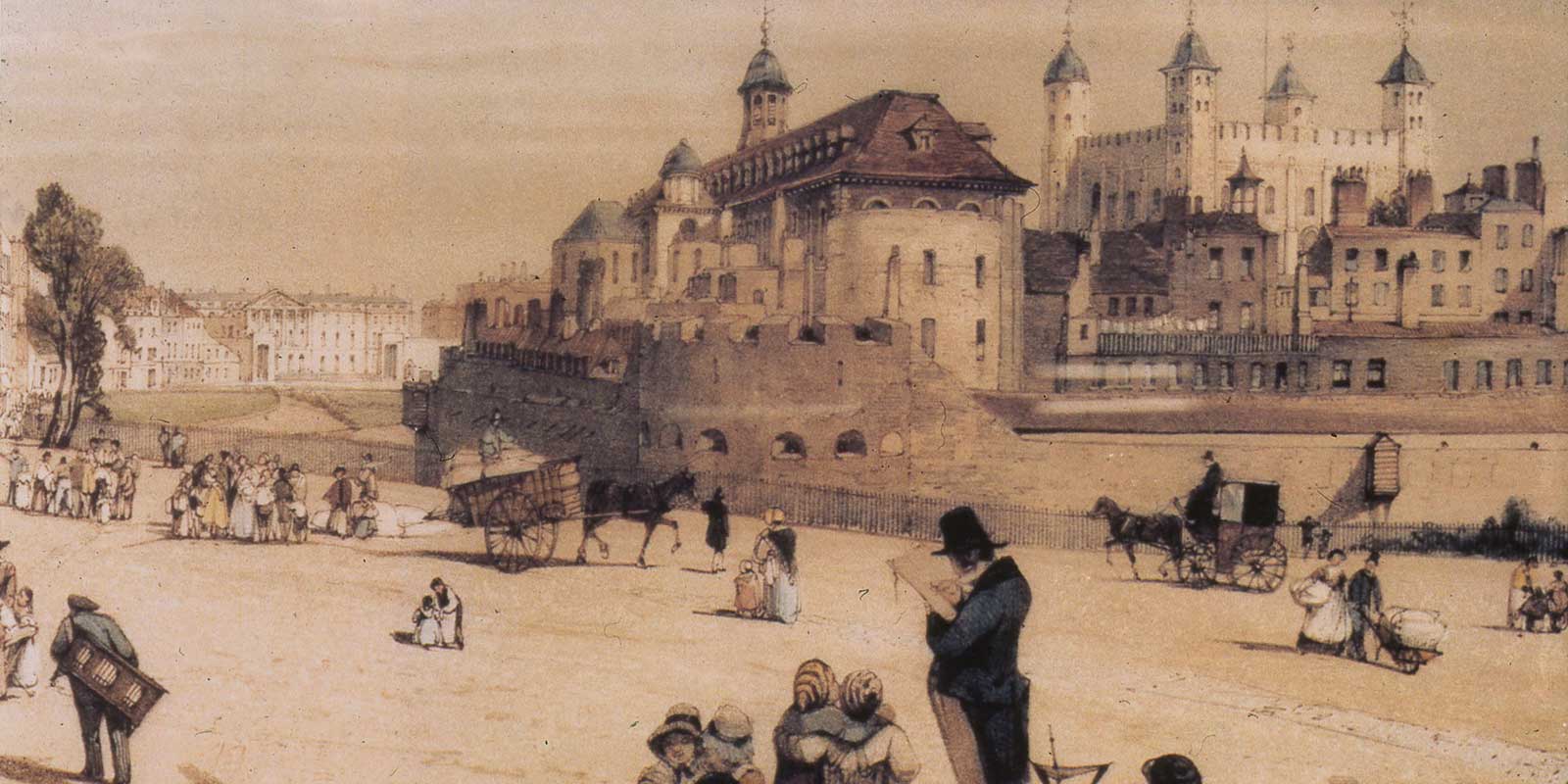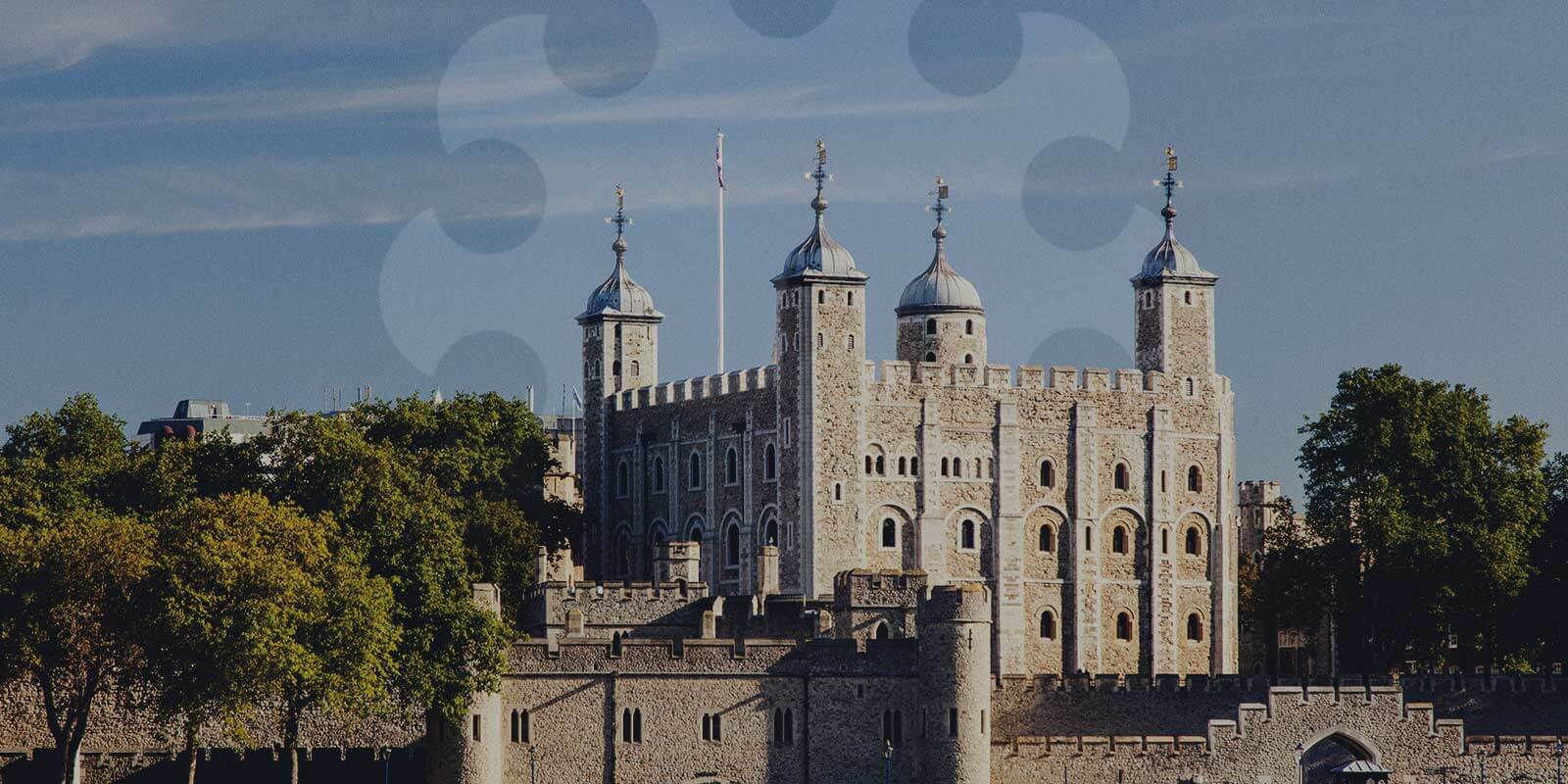Moving to the Tower
By about 1279 the mint had moved to more secure quarters within the Tower of London. The contemporary Pipe Roll records the expenditure of £729 17s 8½d for work on the mint in the Tower. There are also references to ‘the little tower where the treasure of the mint is kept’ and to timber bought for ‘workshops in the barbican for the needs of the moneyers’. What is not clear is whether The Royal Mint’s first quarters in the Tower were in the area which it subsequently occupied between the inner and outer walls.
Humble accommodation
For the next 500 years, The Royal Mint remained in the Tower of London. A plan from 1701 shows the mint buildings forming a narrow horseshoe running round the three sides of the Tower not bounded by the river. These buildings were ‘largely of wood; the chief of them were two stories; most were crazy with age, held up by timber shores and pinned together with clamps of iron’. One might imagine an overseas visitor in 1710 expressing surprise that handsome coins could emanate from such wretched buildings.
A step forward
Minting processes became mechanised in the seventeenth century and the installation of mills and presses, while improving the appearance of the coins and making them more difficult to clip and to counterfeit, aggravated the cramped conditions in the Tower. Occasional disputes with the garrison caused further tension and as the eighteenth century drew to a close there was talk of moving The Royal Mint.
OUR HISTORY
find out more
50 years in llantrisant
find out more

